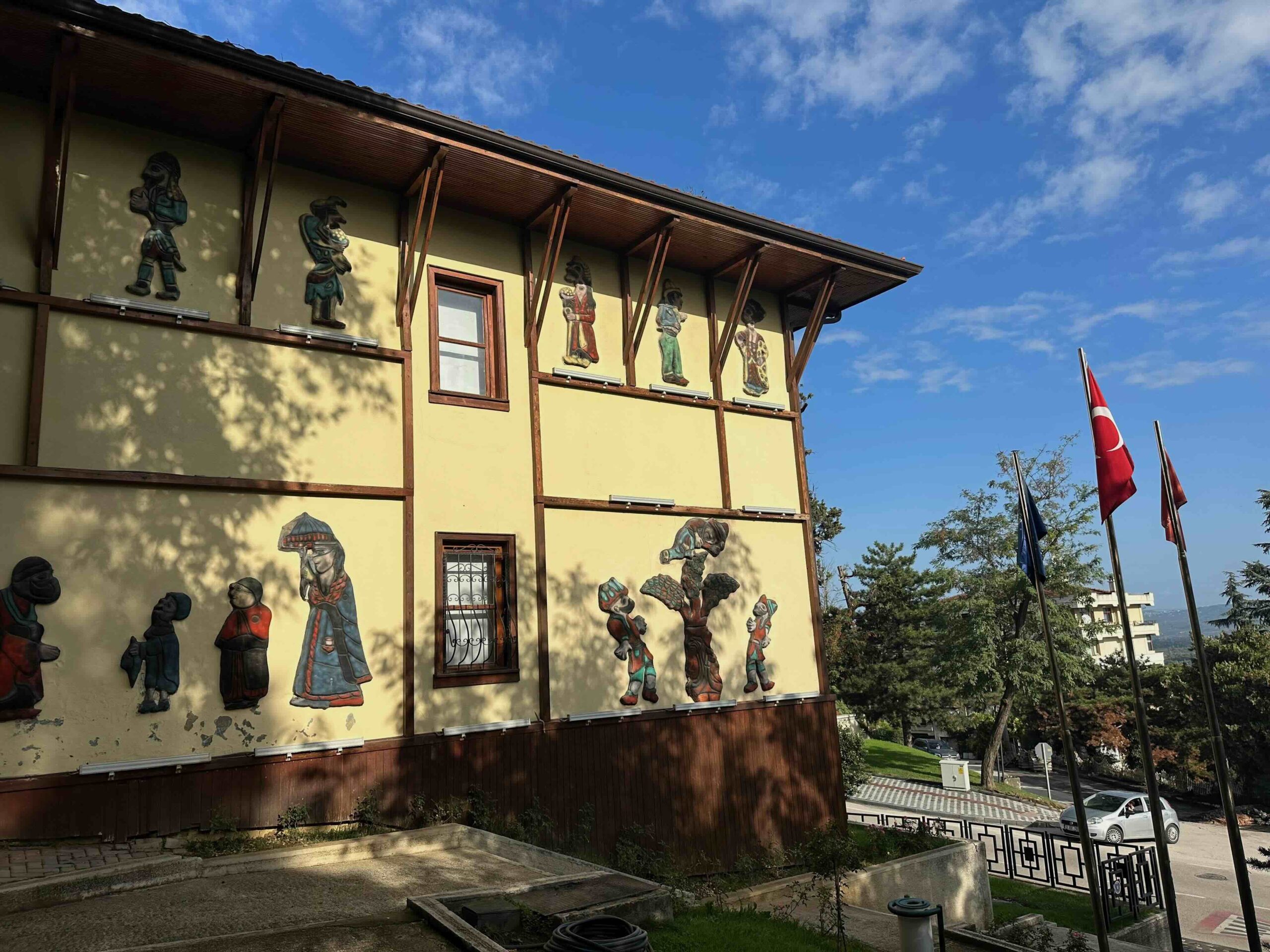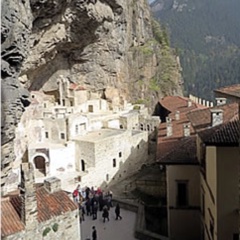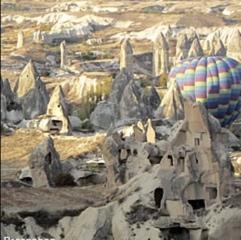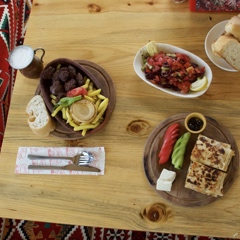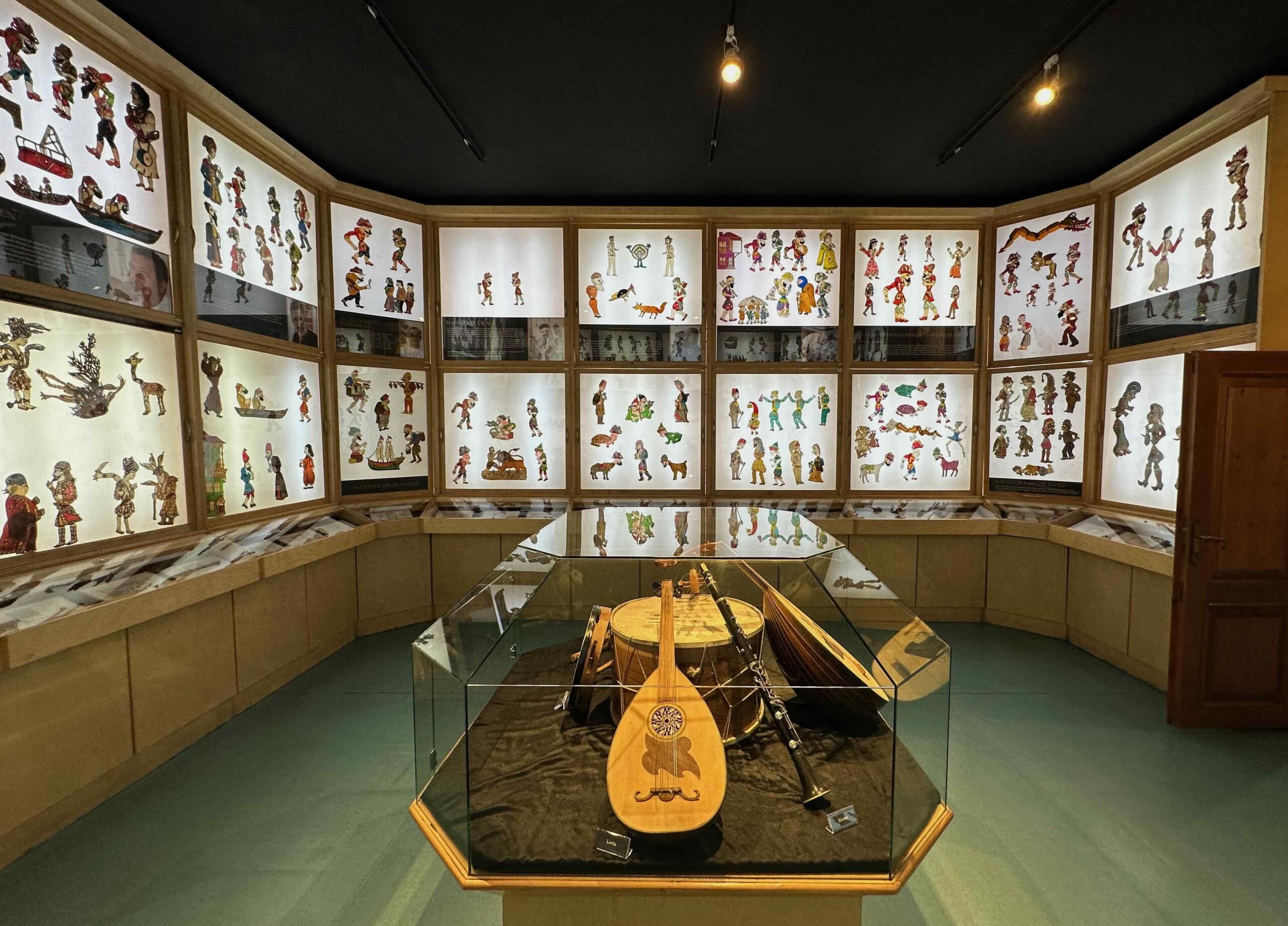
Karagöz and Hacivat (“Black Eye and Hacivat”), also known as the Karagöz Play, is the name of the traditional Turkish shadow play, which is played through a puppet theater (shadow theatre). It was inscribed into UNESCO's Intangible Cultural Heritage in 2009.
These shadow plays mostly revolved around the two main characters, Karagoz and Hacivat. The puppets play between two traditional Turkish houses with second-story windows from which the irate wives of the comedians can berate them for their mischief. "Karagöz" is a bald man who wears an "işkırlak" hat. He is uneducated, impulsive, and relies on temporary work from Hacivat. He is quick to react and represents people's common sense. He speaks indiscreetly and uses vulgar language. He is known for fighting with his wife. Karagöz represents the morals and common sense of the nation.
Hacivat is an eloquent and astute negotiator, skilled in communication. He speaks a mix of Persian, Arabic, and Arabic words, making it difficult for Karagöz to understand him. Hacivat represents the higher-class ideology in the Ottoman Empire. The fun in their games is based on these misunderstandings, which in turn also reflect the reality and culture of the Ottoman Empire at the time.
The Karagöz and Hacivat plays were often performed for the entertainment of the audience in small and portable shadow theatres that were set up in coffee houses, parks, and other public places. While the topics of shadow plays varied by puppeteer, they often satirized daily concerns and ethnicities through exaggerated characters. These characters also symbolized the wide variety of ethnicities and people from different social classes in the Ottoman Empire. There were also lots of sexual and scatological jokes and pranks that might be toned down when children were present but given a full airing for an adult audience.
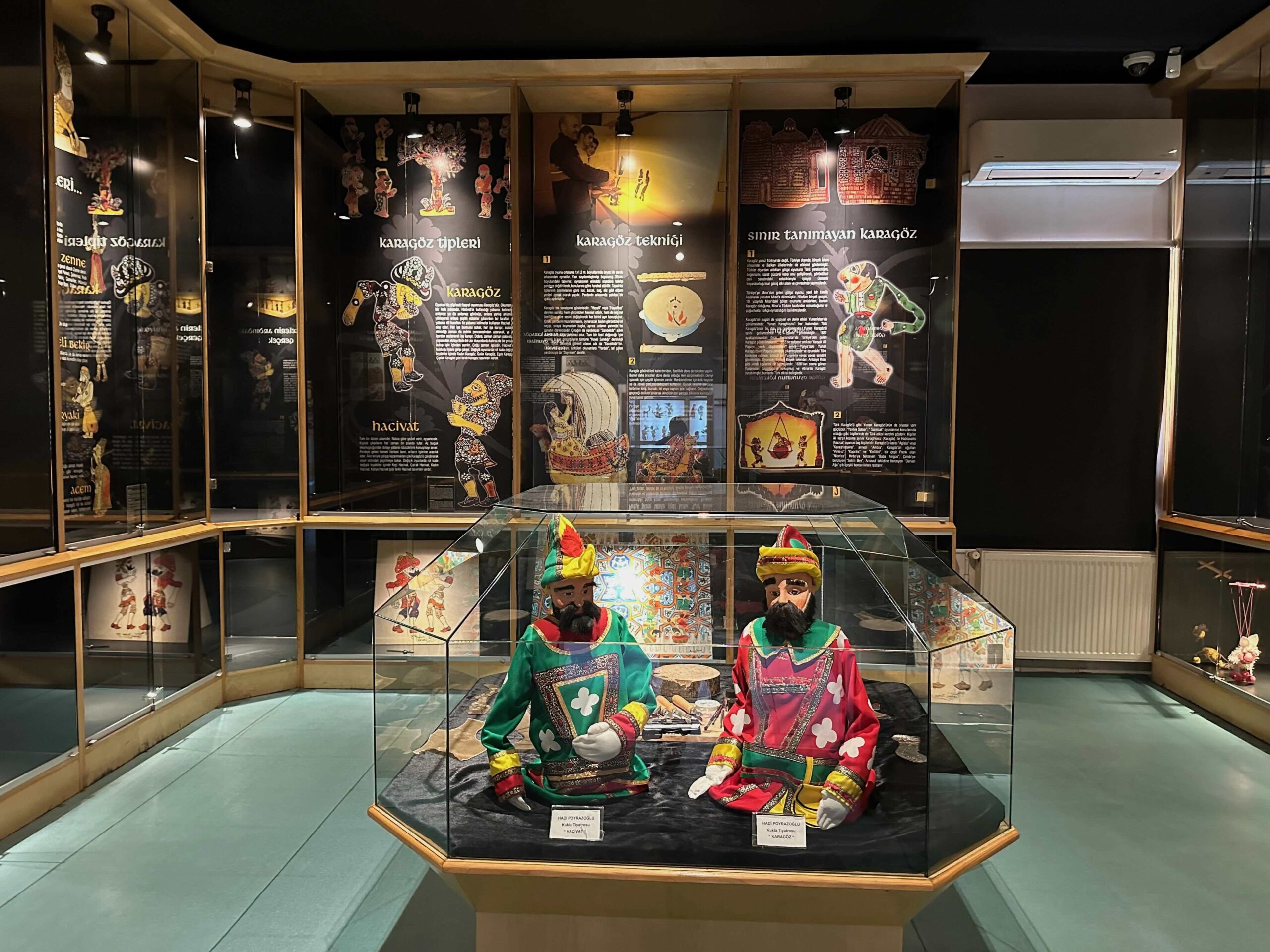
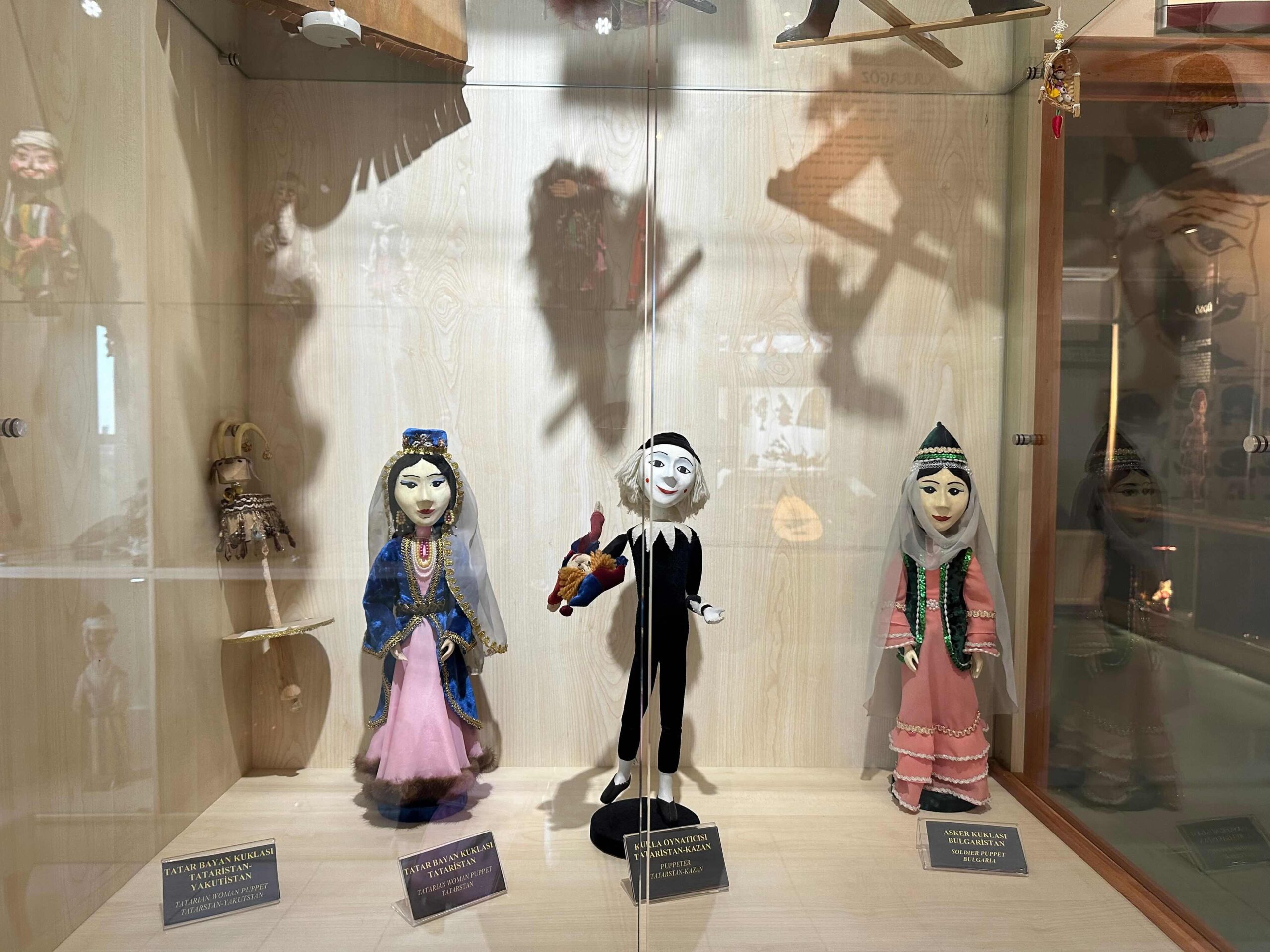
History and Legend of Karagoz and Hacivat
The legend of Karagöz is said to have begun in Bursa when two men working on the construction of the Ulu Cami in 1396 would perform impromptu comedy routines. They became very popular with the other workers, who would stop work to watch their antics. This slowed the progress of construction, and when the sultan heard of it, he condemned the two men, Karagöz and Hacivat, to death. After the deaths of Karagöz and Hacivat, Sheikh Küşteri begins creating and performing with his own puppets. His love for the characters lives on through his puppetry and helps to keep their memory alive.
So the legend goes. Whatever may have happened to the comedians, this Turkish shadow play, based on their jokes, pranks, fights, intrigues, stupidity, and camaraderie, survives and prospers to this day in Bursa and across Turkey.
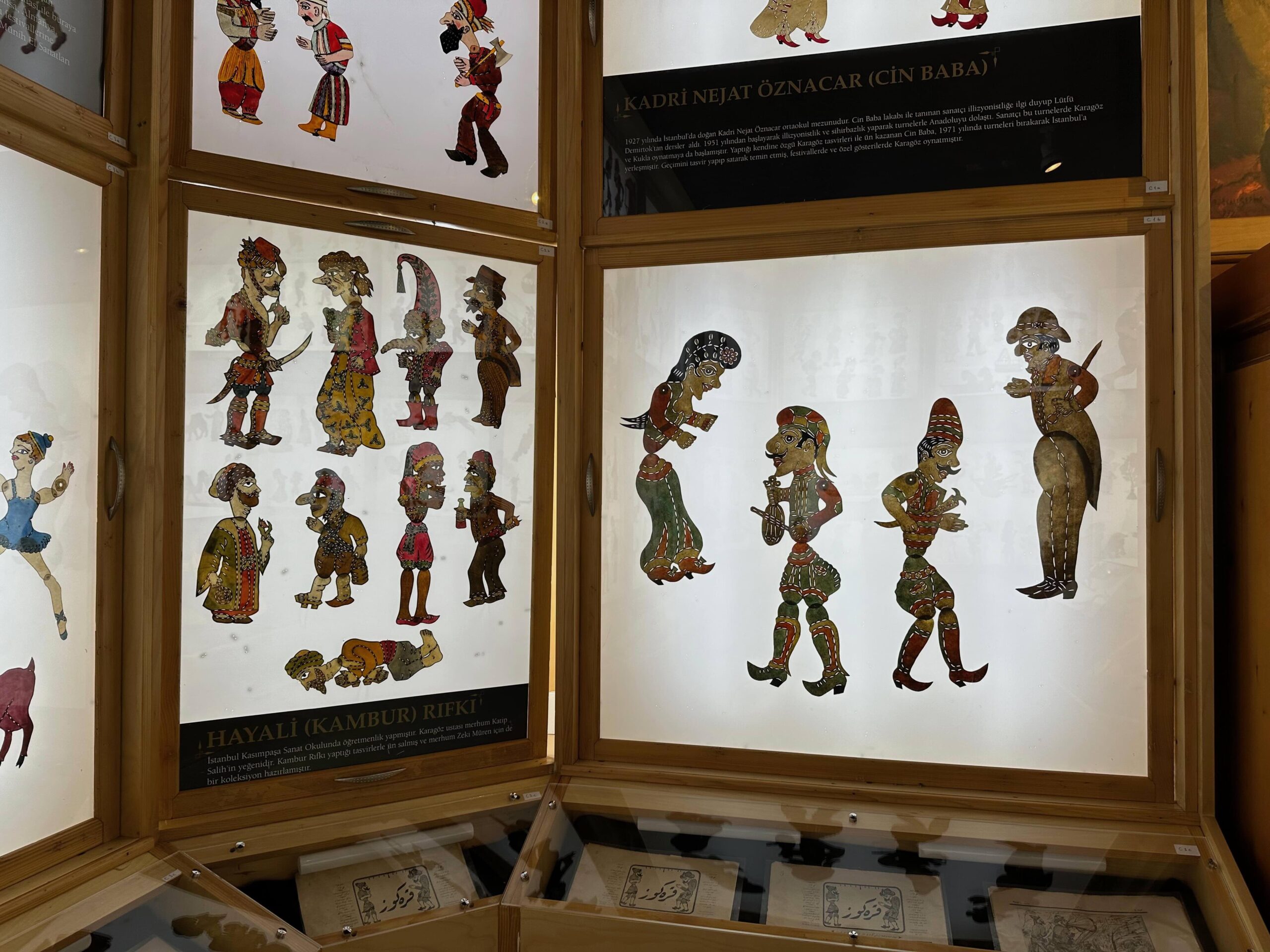
Karagoz and Hacivat Craft and Preparation
Shadow puppets are flat figures cut from camel skin or donkey leather, oiled to make them translucent, then perforated and painted, and mounted perpendicularly at the ends of sticks. A white sheet is hung as a screen, a strong light is put behind it, and the puppets, pressed gently to the light source side of the sheet, are animated by means of the sticks in the hands of a puppeteer. A talented puppet master could make the figures walk and dance, jump and fight, nod, and laugh.
Karagoz and Hacivat Characters and Plays
Over the years, the shadow plays of Karagoz and Hacivat have covered a variety of topics and characters, but all plays share common characteristic sections.
Karagoz and Hacivat Play Structure
Karagöz-Hacivat plays consist of four parts: Mukaddime, Muhavere, Fasıl, and Bitiş.
Karagöz play begins with its first section, Mukaddime; the shadow theatre starts with a whistle and a landscape show from Küşteri Meydanı (Küşteri Square). Hacivat invites Karagöz by reading a semai (a traditional Turkish poem), and they start arguing and fighting.
In the Muhavere (Quarrel) section, Hacivat and Karagoz ask each other riddles. They describe an event that happened to them or a dream they saw as if it were real.
In the Fasıl (Main Game) section, the main topic develops, and other characters are involved in the game.
Finally, Bitiş (Finale) concludes the topic and resolves the events.
Karagoz and Hacivat Plays
The list of plays is long and includes many set pieces that would have been familiar to generations of the Ottoman sultans' subjects. Today, there are around thirty Karagöz plays that have survived that were not based on any written text. These plays were improvised (tulûat), and some of them were inspired by folk legends. They are generally classified into two main groups: "Kar-ı Kadim" (old plays) and "Nev icad" (new plays). Themes range across the theatrical spectrum: love, jealousy, one-upmanship, rivalry, and—very often—ribaldry.
Karagoz and Hacivat Characters
Over the centuries, the two original characters have been joined by a host of others, including animals as well as humans. The "Karagöz and Hacivat" games included various types of people living in the Ottoman Empire from different social and economic backgrounds. Additionally, some characters represent different nationalities living under the Empire, including Jewish, Greek, Arab, Kurdish, Novice, and Albanian... These types were characterized by their unique attributes, such as their costumes, behaviors, songs, dances, and mannerisms. As soon as they appeared on the screen, the audience instantly recognized and identified them based on these features.
Here are a few examples of characters from the Karagoz and Hacivat plays.
"Çelebi": He is a well-mannered family boy who speaks the Istanbul dialect. He lives off his family's inheritance and is known for his elegant attire and eloquent speech. He is also fond of reading poetry.
"Tiryaki": He is a drug addict who is unemployed. He spends most of his time sleeping and enjoys pleasant substances like tobacco, hookah, and coffee.
"Beberuhi": He is a nervous and easily agitated character who makes a lot of noise and cries all the time.
"Kayserili": He speaks in the Kayseri dialect and is often seen on screen as a grocer or seller of bacon. He is easily recognized by the basket of eggs he carries.
"Kastamonulu": He is a large man who works as a woodcutter. He speaks in his native dialect and is known for his rough manners. He can often be seen carrying an axe.
"Laz": He carries a kemençe, a traditional stringed instrument, and speaks quickly without giving others a chance to speak. He is easily angered but also quick to calm down.
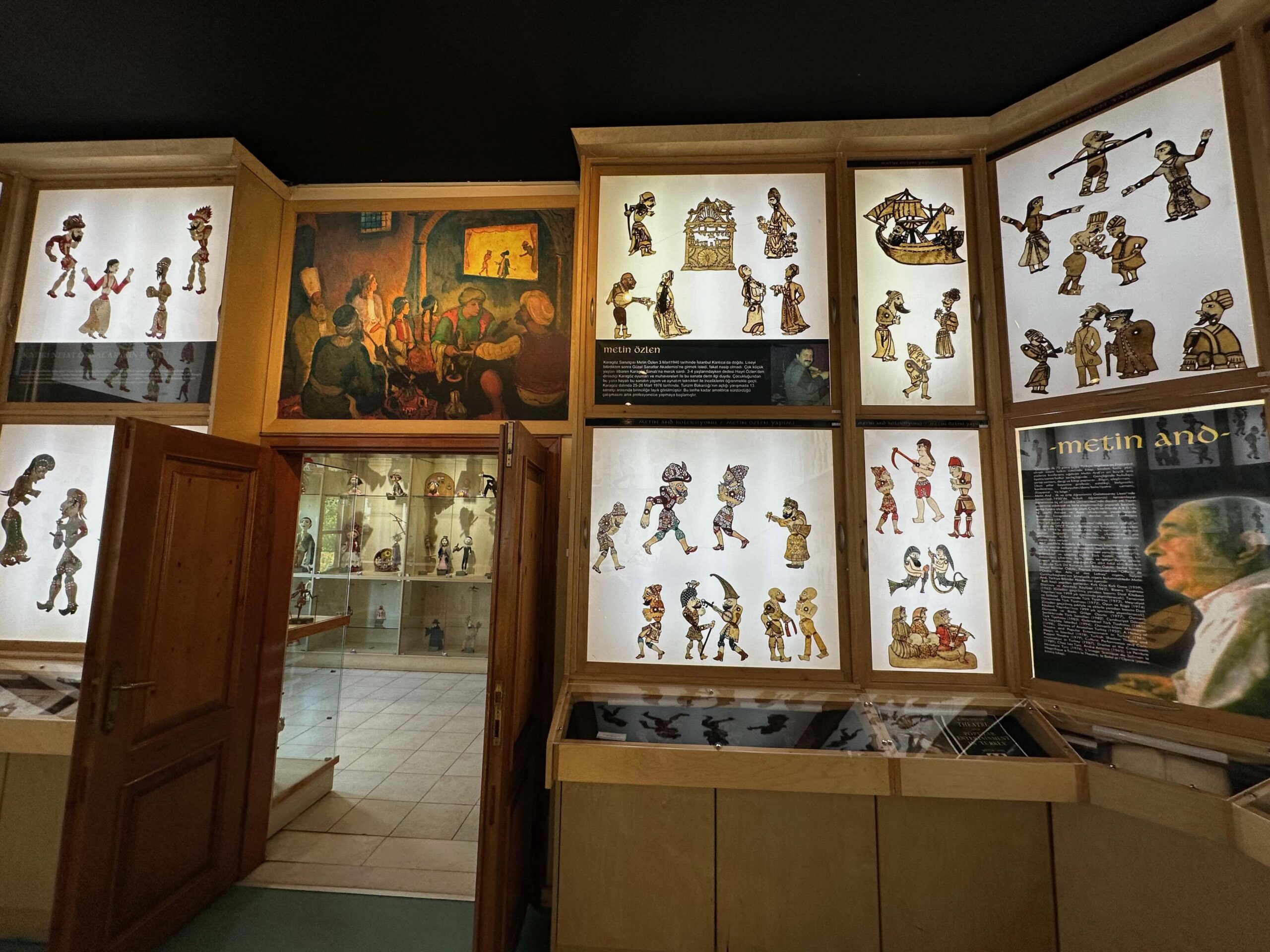
Modern Karagoz and Hacivat Plays
Today, the Karagöz shadow puppet play is carried on in Bursa by Mr. Şinasi Çelikkol, owner of Karagöz Antikacı, an antique shop in the Eski Aynali Çarsi section of Bursa's Covered Bazaar. Sinasi Bey even has a small shadow puppet theater set up in his shop so he can give impromptu performances of Karagöz plays for visitors. He also sells hand-made shadow puppets and many other traditional Turkish handicraft items. Furthermore, the legends of Karagoz and Hacivat are still alive in the Karagoz Museum, which is located in the same city.
Bursa Karagoz Museum (Bursa Karagöz Müzesi)
Karagöz Müzesi (Karagoz Museum), located in the Osmangazi district of Bursa, is a small specialty museum that focuses on the Karagoz and Hacivat shadow plays. The Bursa Karagöz Müzesi is small but has information about the tradition of Karagoz as well as displays of the shadow puppets. The museum also organizes shadow play demonstrations and workshops for children to keep this cultural heritage alive and pass it on to future generations. Many of the displays are in Turkish. Read more on the official site.
Visiting Information:
Entrance: Free (only workshops and exhibitions require a fee and a reservation)
Opening hours: 9-5:30pm, except Mondays.
Location: Çekirge Cd. No:159, 16265 Osmangazi/Bursa (map)
